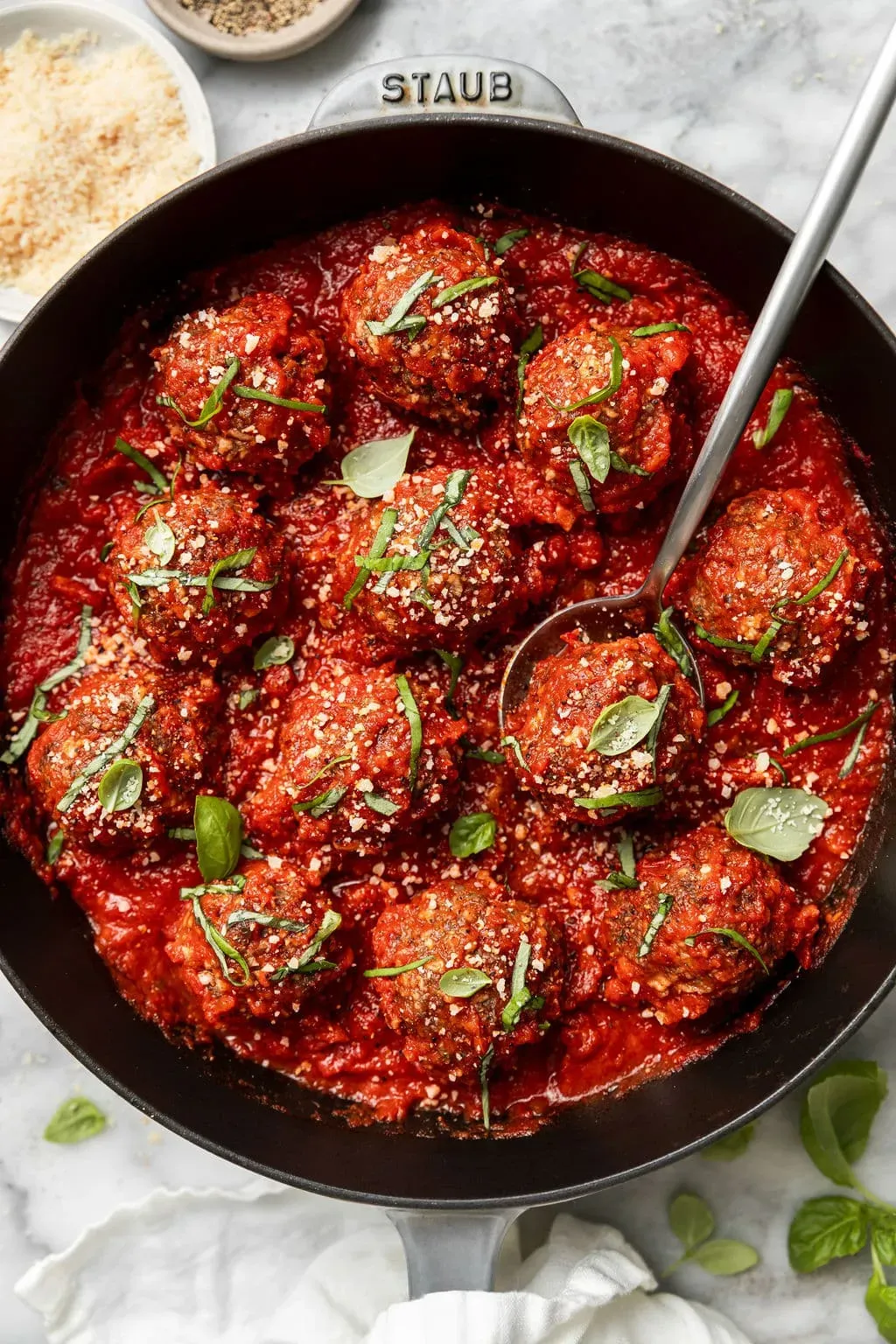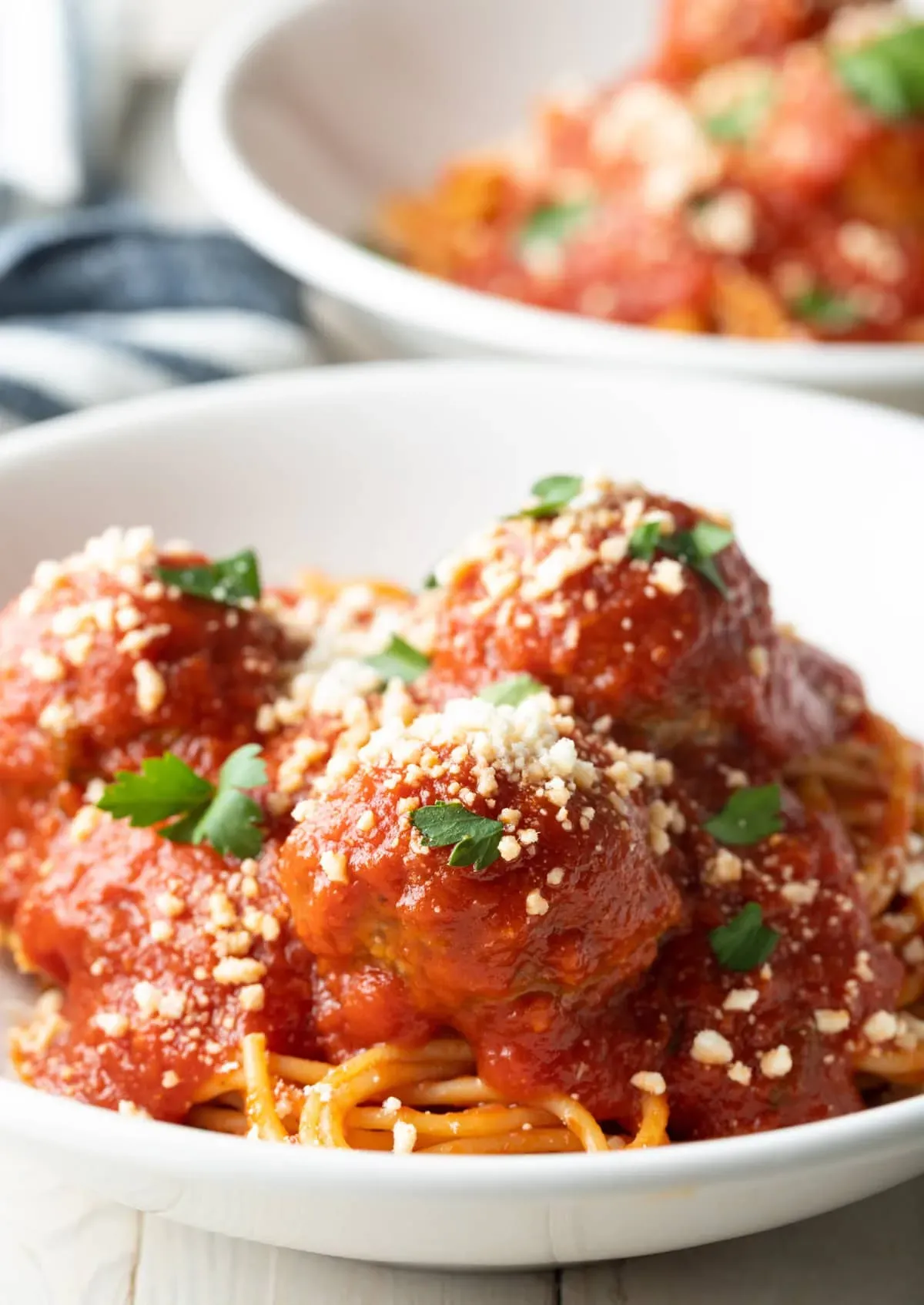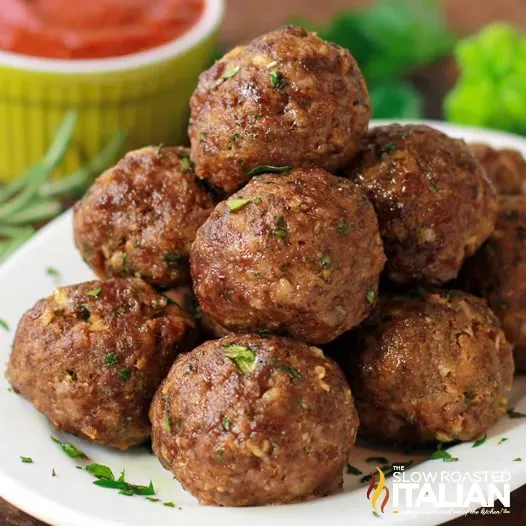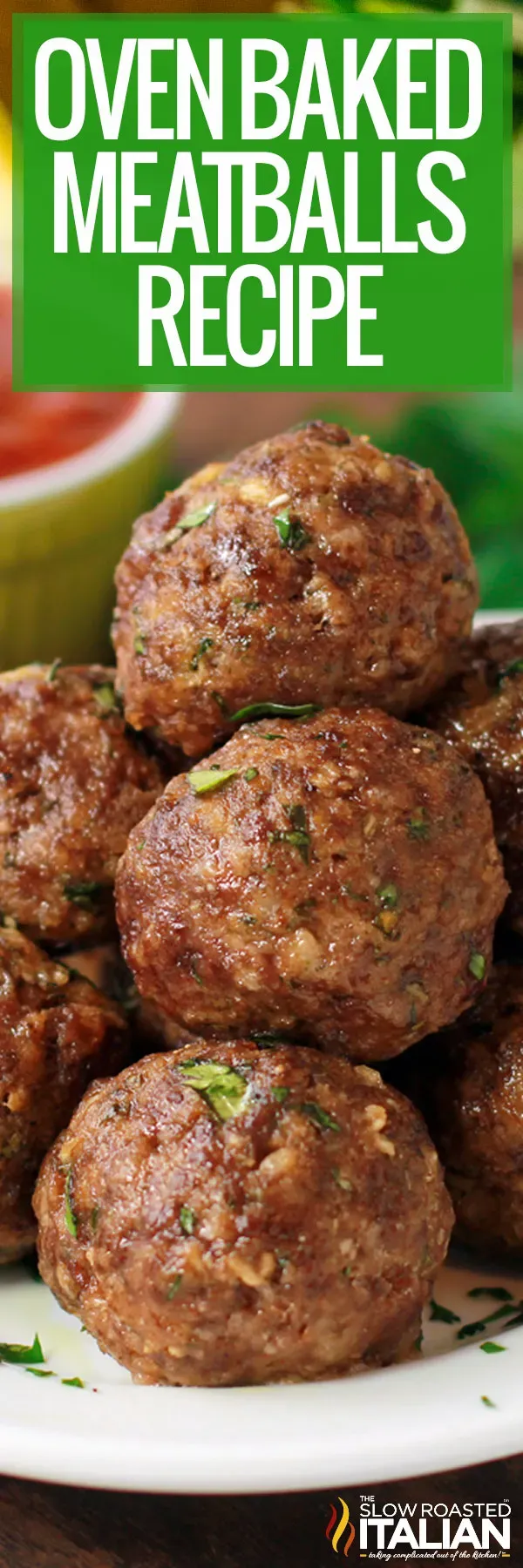Table of Contents
Alright, let's talk meatballs. The kind that make your kitchen smell amazing and bring everyone running to the table. Forget the splatter and mess of frying; we're going straight for the oven. Baking Italian meatballs is the move for convenience without sacrificing that tender, flavorful bite everyone loves. If you've wrestled with greasy stovetops or dry, hockey-puck imposters, you're in the right place.
Gathering Your Ingredients

Gathering Your Ingredients
Alright, so you're ready to make some killer meatballs? First things first, you need the right crew for the job. Think of this as assembling your culinary dream team. You'll want some good quality ground beef – lean is fine, but a little fat gives you flavor and moisture, so maybe 80/20 or 85/15 is a sweet spot. You also need some breadcrumbs; Italian seasoned is easy, or plain Panko works too, you just add your own herbs. Don't forget the binder – usually eggs – and the flavor bombs: garlic, fresh parsley chopped fine, some grated Parmesan or Romano cheese for that salty punch, and of course, salt and pepper. Some folks add a splash of milk or water to keep things tender, which is a trick worth considering. That's your core lineup, the essential players for a classic batch.
Mixing and Forming the Meatballs

Mixing and Forming the Meatballs
Getting Your Hands Dirty (The Right Way)
you've got your ingredients lined up. Now comes the tactile part. Dump everything into a big bowl – the ground meat, the breadcrumbs, cheese, chopped parsley, garlic, salt, pepper, and those eggs. If you're using milk or water for tenderness, splash it in now too. Here's the crucial bit: mix it all together gently. Seriously, gentle is the name of the game. Overmixing is the fast track to tough meatballs. Use your hands; it's the best tool for feeling when everything is just combined. You're not kneading dough here, just bringing the party together until there are no dry spots and everything is evenly distributed.
Rolling Them Out (Uniformity is Key)
Once your mixture is ready, it's time to shape them up. Aim for meatballs roughly the same size. Why? Because uniform meatballs cook evenly. Nobody wants a mix of perfectly cooked and undercooked or burnt bites in the same batch. A standard size is about 1 to 1.5 inches in diameter, maybe the size of a golf ball or slightly smaller. You can use a scoop if you want to be super precise, but your hands work just fine. Roll them lightly between your palms until they're nice and round. Don't pack them too tightly. Remember, gentle mixing extends to gentle forming too.
- Don't overmix: Stop as soon as ingredients are combined.
- Use cold hands: Helps prevent the meat from sticking.
- Keep them uniform: Use a scoop or eyeball for consistent size.
- Don't pack too tight: Loose is good for tenderness.
- Wet your hands slightly: If mixture is sticky, this helps.
Baking the Meatballs

Baking the Meatballs
Getting the Oven Ready
Alright, the meatballs are shaped and looking good. Now, let's get them into their hot tub of glory – the oven. First, preheat that bad boy. For most recipes, 350°F (175°C) is the sweet spot for baking meatballs. It’s hot enough to cook them through without drying them out too quickly. Next, you need a baking sheet. Line it with parchment paper or foil for easy cleanup. Nobody wants to scrub baked-on meat gunk off a pan, trust me. You can also lightly grease the paper or foil, just to be extra sure nothing sticks. A rack on the baking sheet is even better if you have one, as it allows the heat to circulate around the meatballs and helps any excess fat drip away.
Into the Heat They Go
Carefully place your formed meatballs onto the prepared baking sheet. Make sure they aren't touching each other. Give them a little personal space; about an inch apart is perfect. This ensures they bake rather than steam. Pop the tray into your preheated oven. How long do they bake? It depends a bit on their size, but for those 1 to 1.5-inch beauties, you're usually looking at around 25 to 35 minutes. Halfway through, say after 15-20 minutes, you might want to give the tray a little rotation for even cooking, especially if your oven has hot spots. They'll start to brown nicely on the outside.
Meatball Size (approx.) | Oven Temp (°F) | Approx. Bake Time |
|---|---|---|
1 inch | 350°F | 20-25 minutes |
1.5 inches | 350°F | 25-35 minutes |
2 inches | 350°F | 35-45 minutes |
Checking for Doneness
So, how do you know when your masterpiece is ready? They should be nicely browned on the outside. The real test, though, is the inside. The easiest way is to grab one meatball and cut it open. It should be cooked through with no pink remaining in the center. If you want to be truly precise, use an instant-read meat thermometer. Insert it into the center of a few meatballs. You're looking for an internal temperature of 160°F (71°C). Once they hit that mark, pull them out of the oven. Don't leave them in too long past that point, or they might start to dry out. They're perfectly cooked recipe for italian meatballs baked in oven when they are juicy inside and firm but not hard on the outside.
Serving Suggestions
the meatballs are out of the oven, smelling fantastic and ready for their moment. This is where the fun really begins because baked Italian meatballs are incredibly versatile. Obviously, the classic move is tossing them into a simmering pot of your favorite marinara sauce – homemade or jarred, no judgment here – and serving them over a mountain of spaghetti or your pasta shape of choice. But don't stop there! They're also killer piled onto a crusty roll with some sauce and melted mozzarella for a meatball sub that'll make your eyes roll back. Or, serve them straight up on a platter with toothpicks as an appetizer for your next gathering. Pair them with a simple side salad or some crusty bread to sop up the sauce, and you've got a meal that feels both comforting and impressive, all thanks to these little baked beauties.
Pro Tips for Perfect Baked Meatballs

Pro Tips for Perfect Baked Meatballs
let's get real about making these baked meatballs sing. Beyond the basic steps, there are a few little tricks that separate the "pretty good" from the "wow, these are amazing." First off, make sure your ingredients, especially the meat and eggs, are cold when you start mixing. Cold ingredients are easier to work with and help the meatballs hold their shape better. Don't be afraid to taste and adjust your seasoning *before* you add the raw meat – you can mix a tiny bit of the breadcrumb/spice mixture with a little water and microwave it for a few seconds to get an idea of the flavor profile. Also, using a baking rack set inside your baking sheet is a game-changer; it lifts the meatballs, letting the hot air circulate all around them for even cooking and allowing fat to drip away, resulting in a less greasy final product. Little things, big difference.
- Use cold ingredients for easier handling.
- Taste and adjust seasoning before adding meat (test a tiny cooked bit!).
- Employ a baking rack for better air circulation and drainage.
- Don't overcrowd the pan; give them space.
- Resist the urge to keep opening the oven door.
Storing and Freezing Leftovers

Storing and Freezing Leftovers
so you've made a big batch of these incredible baked Italian meatballs, maybe more than you can eat in one sitting (a good problem to have, honestly). Don't let those precious leftovers go to waste! Properly storing and freezing leftovers is key to enjoying your hard work later. Once the meatballs have cooled completely – and I mean completely, don't put warm food straight into the fridge – pop them into an airtight container. They'll keep well in the refrigerator for about 3 to 4 days. If you're planning ahead or just want to save some for a rainy day, freezing is your best friend. You can freeze them cooked, either plain or already in sauce. For plain meatballs, spread them in a single layer on a baking sheet and freeze until solid (this prevents them from sticking together), then transfer them to a freezer-safe bag or container. They'll last in the freezer for up to 3 months.
- Cool meatballs completely before storing.
- Use airtight containers or freezer bags.
- Refrigerate for up to 3-4 days.
- Freeze plain meatballs solid on a tray first.
- Freeze in sauce for easy reheating.
- Frozen meatballs are best within 3 months.
FAQs about Baked Meatballs

FAQs about Baked Meatballs
Why are my baked meatballs sometimes dry?
Ah, the dreaded dry meatball. It's a common complaint, and usually, the culprit is either overmixing the meat mixture or overcooking them. Remember how we talked about being gentle? That wasn't just for show. Mushing the meat too much develops the proteins, making them tough. Baking them for too long or at too high a temperature also sucks out all the lovely moisture. Using very lean meat without any binder like breadcrumbs or milk can also contribute. Think of it like a sad, dried-up sponge. We want a juicy, flavorful bite, not a crumbly disappointment.
To avoid this fate, stick to the gentle mixing rule. Use the recommended temperature and baking time, and always check for that 160°F internal temperature. Pull them out as soon as they hit it. Adding a splash of milk, water, or even some grated zucchini (a classic Italian nonna trick!) can also help keep them moist. Nobody wants a dry meatball after all that effort. It's just not right.
- Avoid overmixing the meat.
- Don't overcook; check internal temp (160°F).
- Consider adding milk, water, or grated veg for moisture.
- Use meat with a little fat (80/20 is good).
Can I switch up the meat or add vegetables to this recipe for italian meatballs baked in oven?
Absolutely! While our base recipe for italian meatballs baked in oven uses ground beef, you're not locked into it. You can use a mix of beef and pork, or even beef, pork, and veal for a classic Italian blend that offers great flavor and texture. Ground turkey or chicken work too if you prefer a lighter option, just be mindful they can dry out faster, so adding a little extra moisture or fat is a good idea. Some people swear by adding finely minced onion or bell pepper to the mix for extra flavor and moisture, though traditionalists might raise an eyebrow. If you add veggies, make sure they are very finely chopped so they cook through properly.
Experimenting with different cheeses is also fair game. Pecorino Romano has a sharper bite than Parmesan. You could even try a little grated provolone in the mix. Just like life, the kitchen is a place for a little adventure. Don't be afraid to tweak things once you've got the basic method down. Just remember that changing ingredients can slightly affect cooking time, so keep an eye on that internal temperature.
Wrapping Up Your Meatball Mastery
So there you have it. Baking Italian meatballs isn't some culinary dark art; it's a straightforward path to dinner that doesn't involve scrubbing grease off your stove for an hour. You've got the steps, the ingredients, and the know-how to turn out tender, flavorful meatballs consistently. No need for heroic tales of deep-frying disasters or dry meatloaf masquerading as Italian fare. Just good ingredients, a hot oven, and the simple satisfaction of pulling out a tray of perfectly baked, ready-for-sauce meatballs. Go make some.